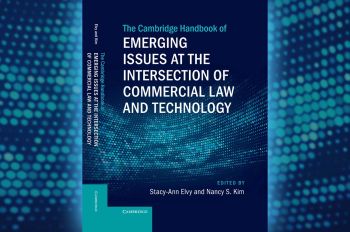BioCAT Advances Research on Muscle Disease, COVID-19, and More with Federal Funding Renewal

A team of researchers led by Professor of Biology and Physics Thomas Irving has received an $8.6 million grant from the National Institutes of Health to continue operating the Biophysics Collaborative Access Team (BioCAT) facility at the Advanced Photon Source (APS) at Argonne National Laboratory for the next five years. These critical funds will enable the team to continue biomedical research projects with implications for the engineering of future health solutions, including potential advancements related to the prevention and treatment of COVID-19.
“The BioCAT facility has unique capabilities, and our new funding allows us to continue to provide them to the communities that rely on them,” says Irving, who has been running BioCAT since 2001. The facility launched in 1997, and provides access to the most intense X-ray beams in the Western Hemisphere for the study of non-crystalline biological materials such as muscle, connective tissue, amyloids, viruses, proteins, and other large biological molecules and their complexes.
BioCAT staff members from Illinois Institute of Technology include Research Assistant Professors of Biology Srinivas Chakravarthy and Weikang Ma, and Research Assistant Professor of Physics Jesse Hopkins. Researchers come from Illinois Tech as well as from all over the country and internationally to use the facilities, with BioCAT supporting around 60–80 “beamtime” projects per year, Irving says.
Ma is the beamline scientist responsible for BioCAT’s muscle X-ray program and recently co-authored a paper titled “Fast Skeletal Myosin-Binding Protein-C Regulates Fast Skeletal Muscle Contraction,” which was published in the Proceedings of the National Academy of Sciences of the United States of America (PNAS). The research project was led by Sakthivel Sadayappan, a professor in the University of Cincinnati College of Medicine’s Division of Cardiovascular Health and Disease, who relied on BioCAT’s facility to carry out this study.
“BioCAT is the only facility in the world with a muscle X-ray diffraction program, even though other beamlines outside of the United States do some muscle X-ray experiments,” Ma says. “Dr. Sadayappan is a long-time collaborator with us. He has this novel mouse model with one important protein, fast skeletal myosin-binding protein-C, knocked out. Muscle X-ray studies were the best way to see how a lack of this protein changed the molecular structure of the muscle and how this affects muscle function. We were very involved in the X-ray experiments and analyzing the data, as well as writing the paper.”
Ma and Irving published a separate study in 2020 that utilized BioCAT’s X-ray technology to reveal the structure and behavior of proteins that regulate muscle movement in tarantulas. The findings, which also appeared in the PNAS, help explain how the molecules in the muscle “turn on” to enable contraction and how muscles produce more force in a second contraction after a first one.
Researchers studying COVID-19 are also utilizing the BioCAT beamline to study elements of the virus. Chakravarthy is collaborating with researchers from Case Western Reserve University, Duke University, and Goethe University Frankfurt on a project looking at how ribonucleic acid, or RNA, a molecule that is similar to deoxyribonucleic acid, or DNA, responds to potential COVID-19 drug candidates. A second COVID-19 study, a BioCAT collaboration with Francesc X. Ruiz Figueras, an assistant research professor in the Center for Advanced Biotechnology and Medicine at Rutgers University, is examining the impact of COVID-19 on nonstructural proteins within the body in hopes of identifying novel targets for drug design and discovery.
One of the most exciting aspects of BioCAT’s federal funding renewal, Irving says, is that the team will be able to continue using the APS after it is upgraded to an entirely new machine in 2022–23 with separate U.S. Department of Energy funding.
“We’re going to be ready and willing to take advantage of the exciting new opportunities enabled by this new, brighter X-ray source,” Irving says. “The APS has always been a wonderful machine for biological studies and it now will become even better, the best in the world for this kind of thing.”
Research reported in this article was supported by the National Institutes of Health under award number P30GM138395. The content is solely the responsibility of the authors and does not necessarily represent the official views of the National Institutes of Health."
Photo: Professor Thomas Irving adjusts equipment in the Biophysics Collaborative Access Team bay at Argonne National Laboratory’s Advanced Photon Source [Michael Goss].




